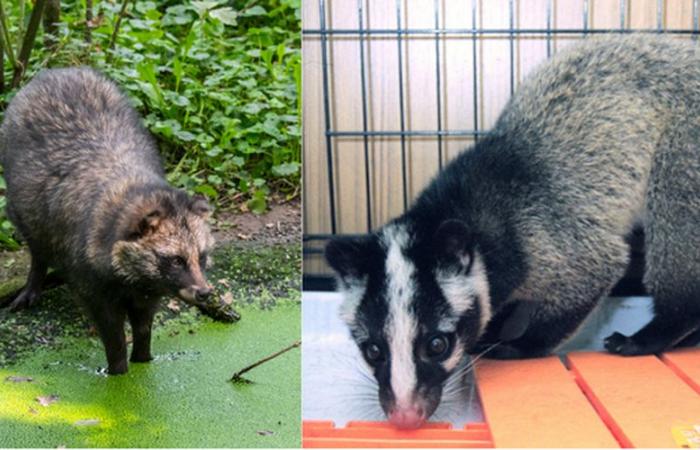
The raccoon dog or the civet are “animal species at the possible origin of the pandemic”, reveals the investigation of an international scientific team published this Thursday, September 19 in the journal Cell.
Long suspected of being the cause of the Covid pandemic, the pangolin has been definitively exonerated.
The investigation by an international research team led by a CNRS team, and published in the journal Cell, this Thursday, September 19, “reveals the animal species that are most likely to have served as intermediate hosts for Sars-CoV-2, the virus responsible for the Covid-19 pandemic.”
“These species were present at the end of 2019 in the Huanan market in Wuhan (China), the epicenter of the pandemic”recall the scientists, who are particularly targeting two animals: the raccoon dog and the civet.
“Racoo dog” for the English, Ianuki for the Japanese, the raccoon dog, originally from Asia, is best known for its fur, breeding developed in Europe and Russia in the 20th century.
The civet, or musk cat, is a small mammal that also lives in Asia, in forests, meadows and bamboo groves. It gave its name to many tobacco shops, because the musk glands of the animal were used to preserve snuff.
Sequencing of samples taken from the Wuhan market
These are the “genetic sequencing of samples taken from market stalls after its closure on January 1, 2020”which led to the trail of the two animals: “Scientists have highlighted the co-presence in this place of the genetic material of the Sars-CoV-2 virus and that of certain wild animals. Among the species identified are in particular raccoon dogs and civets, two species already implicated in the emergence of SARS in 2002 and considered to facilitate the passage of the virus to humans.”the study says.
To reach this conclusion, the researchers “highlighted that the genetic diversity of the virus present in the market was representative of the genetic diversity of early human cases of the pandemic.”
For them, there is no longer any doubt: “This new information supports the hypothesis that the pandemic was triggered by the introduction of infected animals into the market in late 2019.”.
Their study finally shows “the presence of other zoonotic viruses on the market, highlighting the high risk of new pandemics linked to the sale of live animals in densely populated cities”.
In September, “active circulation” of Sars CoV-2, according to Public Health France
According to the report drawn up on September 18 by Public Health France, Covid infection indicators are on the rise among city doctors, and remain stable in hospitals. On the other hand, “The increase in the detection of Sars-CoV-2 continues for the third consecutive week in wastewater”.
Public Health France concludes with a finding of “active circulation of Sars-CoV-2 in the general population since June 2024”.
The vaccination campaign against Covid-19, with an injection adapted to the JN.1 variant, will be carried out jointly with that against influenza, starting October 15. People aged 65 and over, as well as immunocompromised people, people with comorbidities, pregnant women, are the main targets of the campaign.





